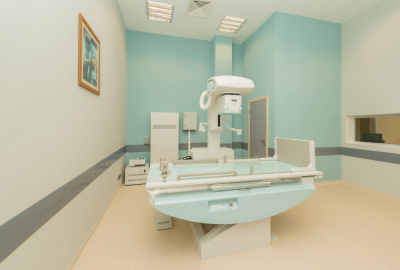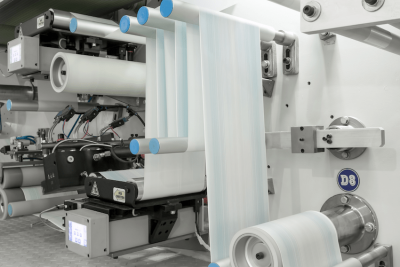We use cookies to provide you with an improved user experience and to personalize content. To learn more, see our Privacy Policy.
Free UPS ground shipping on all orders of $150 or more. Shop Now
OEM Manufacturing
Application Case Study: Pressure Control in Medical X-Ray Systems
Medical radiography equipment is highly prone to heat-induced outages and failures, so much so that most high-volume machines today come equipped with onboard active cooling systems. In a recent project, Whitman Controls was engaged by a client seeking automation support for their own line of x-ray tube cooling systems. Thinking about how much time could be saved in radiology waiting rooms everywhere if x-ray machines never overheated, we couldn't help but scrub in!
Avoiding Process Upsets in Pulp & Paper Manufacturing
For those of us who enjoy reading a good hardcopy book, part of the experience is feeling the physical paper in our hands. We know what "good" book pages feel like - thicker than thin, crisp, with a slightly rough texture that grabs our fingers, and dense enough that it feels like each page deserves to carry the weight of the words printed on it. For us to enjoy this experience as much as we do, a great many things must happen correctly across the paper manufacturing process.
Contract Buying Sensors for HVAC Systems
Procuring industrial components under a formal purchasing contract historically has not been very common in the United States, but with the supply chain rumblings of the last several years, more and more volume part buyers are exploring contract-like engagements to secure the products they need.
Next-Gen Vehicles need Next-Gen Instrumentation
Few topics are as socially charged these days as the debate between electric versus fossil fuel vehicles. Regardless of where you land on the matter, one point is crystal clear, which is that next generation vehicles of any type will increasingly rely on advanced instrumentation, electronic, and integrated circuit technologies to meet both environmental and consumer experience demands. In this article, we’ll take a look at the role of instrumentation in emerging vehicle technologies beyond just fuel types.
Understanding Instrumentation Certifications and Approvals
As with many regulatory compliance matters, navigating code requirements for industrial automation projects can range from mildly confusing to virtually impossible! No singular body of code tells controls engineers what regulations their projects must comply with, complicating a seemingly simple task like specifying a sensor. But, there is hope. One very useful way that instrumentation manufacturers such as Whitman Controls help streamline compliance is by using Certification, Approval, and Testing marks. Let’s define each of these items, and then go on to an example:
Application Case Study: OEM Instrumentation for Medical Contract Manufacturing
Medical testing is a fascinating industry segment that sits squarely at the crossroads of human biology, clinical laboratory science, and industrial engineering. This OEM faced a series of large projects to help their customers (medical device contract manufacturers) scale up operations, and Whitman was eager to explore ways to help both the OEM and the end users in one fell swoop.
Selecting Instrumentation for Contract Manufacturing
Contract Manufacturers operate in a very interesting market space, where they apply a rather narrow range of specialized equipment and know-how to a seemingly endless array of projects for an ever-changing set of customers. Companies that provide contract manufacturing typically specialize in a defined type of production – that is, a specific style, material, media, process workflow, scale, or discipline of work – but not on a single set end product, brand, or label. In this article, we look at a few key interests of selecting instrumentation for contract manufacturing equipment.
Application Case Study: Vacuum Control for Semiconductor Wafer Deposition
Producing the semiconductor chips found in electronics from mobile phones to space-faring satellites today is the result of building circuits at a nanoscopic scale, where chemical reactions deposit or decompose into desirable material films that make up switching transistors and planar conductivity circuits in silicon wafers. A leading semiconductor equipment manufacturer recently engaged Whitman Controls to provide instrumentation for a new generation of their production machinery, specifically in the form of evacuation control for the vacuum chambers on their atomic layer deposition equipment.
Precision Instruments for Cutting Edge Semiconductor Applications
Semiconductor manufacturing transforms raw silicon, polymers, and metallic materials into electrical transistor switching wafers using production equipment and processes that operate in spaces measured in nanometers. At this scale, precision, accuracy, and fidelity are of the utmost importance. We provide a few examples of semiconductor manufacturing applications, each presenting unique demands onto their control system’s sensors.
Application Case Study: Cutting OEM Delivery Times with Strategic Instrumentation Sourcing
When the Medical Device industry was faced with either finding new ways to produce its equipment or leaving medical professionals without the life-saving devices they required, several key OEMs turned to Whitman Controls’ Strategic Instrumentation Sourcing practices for answers.















